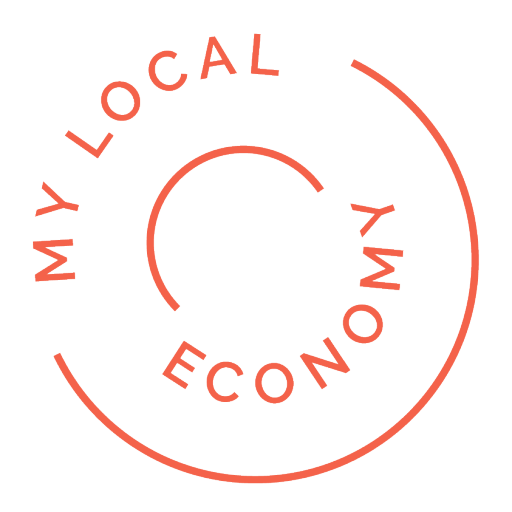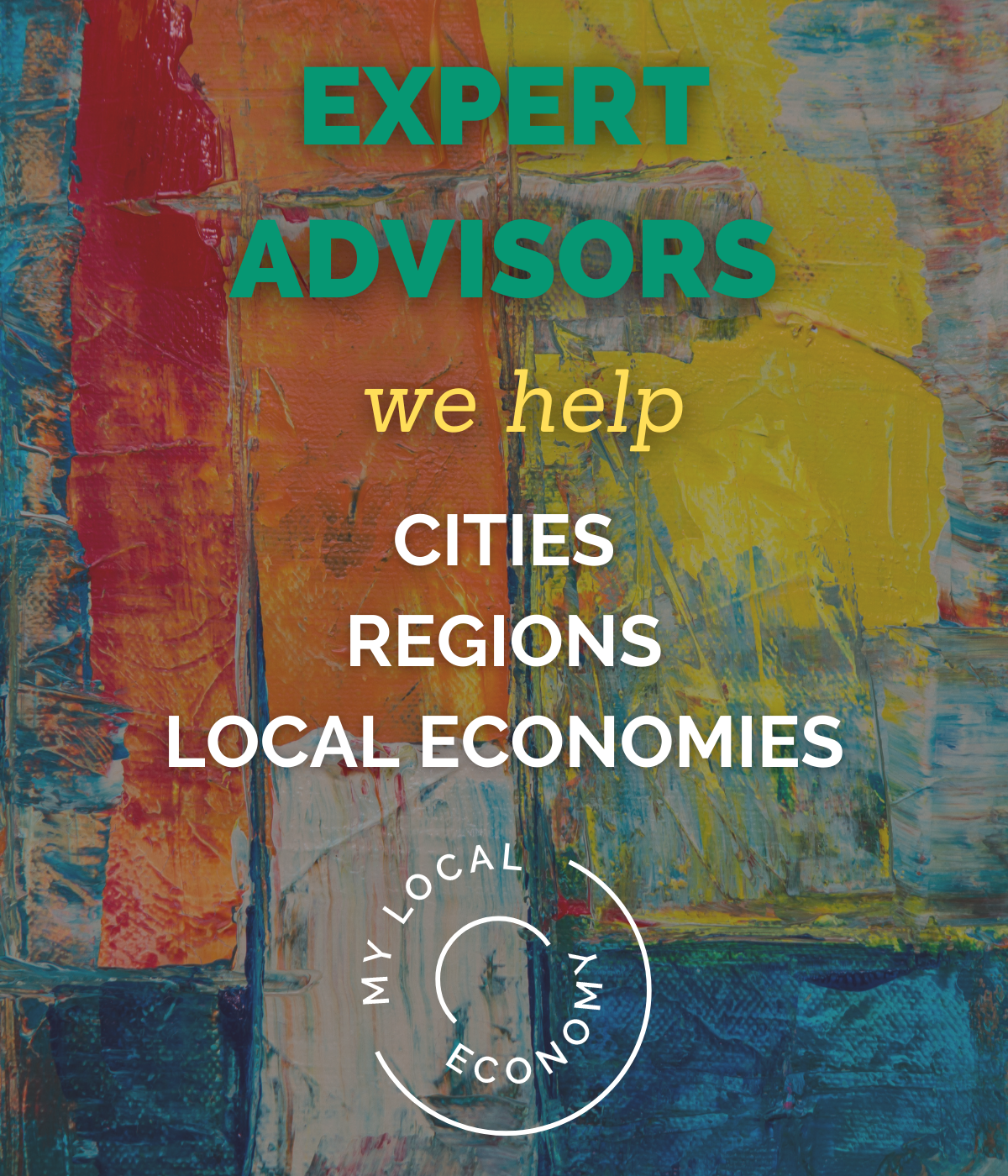1. INTRODUCTION
In this article, Glenn Athey, reflects on the impacts of Covid-19 on region, city and local economies and offers his thoughts on the challenges and next steps. This is a summary of a longer article, posted as a pdf here.
The economic impacts of Covid-19 began in January, particularly in terms of a collapse in tourism and visitor bookings to UK hotels and venues. By March, they rapidly – with a large decline in economic activities – were exposed to the virus: travel, hospitality, tourism, retail, personal services, arts & culture. Then what followed was a rapid downturn, caused by lockdown (implemented on 23 March in the UK), temporary business closures, a decline in spending and loss of revenues. Supply chains were disrupted, company balance sheets were impacted.
2. THE ECONOMIC IMPACTS OF COVID-19 ARE UNPRECEDENTED
Now, as we are in the midst of a start-stop recovery and another lockdown in the UK, we can see that the immediate and long-term impacts of Coronavirus are going to be devastating for some industries and communities. Brexit must feature in this too, as it is a central part of the context and future upon which businesses are making decisions.
As well as the rapid decline in activities associated with contact to the virus and lockdown, there were big swings in demand and supply. The demand for human life sciences products and services, and video conferencing went up whilst demand for new cars, energy, airlines, and holidays went down. There was supply chain disruption, and workforce disruption due to illness, shielding from Covid-19, and having to stay at home, apart from workers in prescribed industries.
The shift to online working and virtual meetings was accelerated. Many businesses, public services and workers were forced to work online, using cloud data sources and digital services such as conference and video calls. Some businesses and organisations were well prepared for this, and already supported many of the systems and apps the enable remote working – others were not.
Industry impacts at the global level were very apparent in market capitalisation. Company valuations increased significantly in pharmaceutical, cloud computing, ecommerce, communications, online gaming, and IT. By contrast, big losses in market capitalisation had occurred in airlines, brewers, casinos, catering companies and theme parks. Heavy industrials and energy companies were also hit by lower demand.
In May 2020 it was clear that we were heading for a serious recession
It was obvious by May that there was going to be a serious recession. Gross domestic product shrank by 19.8% in the three months to June, according to the Office for National Statistics – more than for any other major advanced economy. We have seen some recovery in the most recent quarter, as GDP grew by 15.5% in Quarter 3 (Jul to Sep) 2020. However, in September, monthly GDP was 8.2% lower than the levels seen in February 2020, before the full impact of the coronavirus pandemic.
Even with the schemes to support jobs such as the Coronavirus Jobs Retention Scheme, and Self Employment Income Support Scheme – there has been a collapse in labour demand and a spike in unemployment. In October 2020, there were 782,000 fewer people on company payrolls compared with pre-pandemic levels. From August to October total vacancies were running one-third lower than the same period in 2019. Redundancies climbed to a record high of 314,000 in July to September — a rise of 195,000 from the previous year and 181,000 from the previous quarter. The official UK unemployment rate rose to 4.8 per cent in the three months to September, The Claimant Count dropped slightly in October 2020 to 2.6 million. This represents a monthly decrease of 1.1% and an increase of 112.4%, or 1.4 million since March 2020.
Covid-19 changed how we interact and has had significant impacts on local economies
When we begin to analyse local impacts in May, spatial variations are immediately apparent. When the numbers of employees furloughed peaked, at the end of May 2020, there was massive spatial variation in the proportion of eligible workers on the CJRS. The highest concentrations were in high density urban areas, and also rural and coast areas.
3. TWO LOCKDOWNS – WHAT ARE THE RISKS TO REGIONAL, CITY AND LOCAL ECONOMIES?
There is much evidence that some local areas are being impacted more than others by Covid-19, and that the socio-economic consequences of lockdown are spatially concentrated. City centre and metropolitan areas have more to lose through restrictions to working in offices, hospitality businesses, and the visitor economy. They are also more vulnerable in terms of density and the higher rate of use of public transport. Rural and coastal areas are more vulnerable to a decline in visitor activity and spend. They also have a higher proportion of residents who are self-employed or own their own businesses.
Continued job losses are likely in manufacturing, accommodation and food, finance and insurance and other services
It is likely that decline and job losses will continue in sectors such as air transport / aviation, hospitality and leisure, arts, culture and entertainment, and tourism and the visitor economy. Cambridge Econometrics’ latest employment forecasts suggest significant falls in engineering, manufacturing, accommodation and food services, finance and insurance and other services. Significant gains in employment are forecast in construction, information technology, public administration, health, and social work.
The impacts of Covid-19 are spatially concentrated, and the future risks will affect some localities more than others
If we examine the industry specialisation of localities in the UK, as in Figure 8 – we can see wide disparities in the shares of employment in industries at risk, such as the accommodation and food industries, which is especially important as an employer in rural and coastal areas. Contrast that with the specialisation in information and communications activities which generally favours London, the Greater South East and the major cities. Overall, there are significant spatial variations in industrial specialisations, and we can expect to see this in terms of local employment losses and gains, as outlined by Cambridge Econometric’s latest projections.
4. LOOKING AHEAD: RISKS, CHALLENGES AND OPPORTUNITIES
The elephant in the room is Brexit. If you were having to restructure your business to survive, you would have to second guess what kind of market environment you would d be facing from 2021 onwards.
Any business facing restructuring will have to factor in Brexit
A weakening currency and domestic economy introduces yet more challenges. It is not entirely due to China that the UK Government is seeking to strengthen its ability to resist foreign takeovers of domestic firms.
If the pound weakens, this may boost the competitiveness of exports. This will take time – as many forward contracts have exchange rates and values built in. However, this will also make imports more expensive. It will make UK assets and firms more attractive to foreign buyers. This could boost foreign investment, but there is a risk it could lead to asset stripping.
Labour demand crunch. Perhaps the greatest risk, and one that causes most concern, is the collapse in Labour demand, and how far this will continue. There are some signs of a small recovery in labour demand, but we are yet to see the full impacts of Covid-19 as the furlough and self-employment support schemes have been extended until March 2021.
Unemployment will increase, and like all other recessions, will persist in the UK for years to come. Deprivation and destitution will increase (see NIESR’s latest analysis and projections) and there will be spatial concentrations.
There are a lot of factors acting against quick remedies to mass unemployment, including: weak labour demand, weak investment, and tough trading conditions for sectors that can create jobs quickly (leisure, retail, hospitality, tourism). Again, Brexit is a factor here in terms of relying on improving terms of trade or inward investment to bring rapid recovery in demand and employment.
As redundancies and unemployment increase, labour demand is faltering
The road ahead is strewn with major issues and obstacles we can’t avoid: market disruption, industrial restructuring, disruptions to international trade, skills supply, mass unemployment, a crisis in entrepreneurship (due to loss of revenues, and lack of government support), declining investment, and accelerating megatrends (such as decline in physical retail, increasing digitalisation and cloud-based services).
Are there any opportunities? For those firms that were able to respond to the crisis by implementing effective home-working and were able to deliver services remotely; they have demonstrated high levels of resilience and agility, and will be in a more favourable position to respond to recovery and growth when it happens. E-learning has now, through circumstance, become a lot more viable, accessible, and accepted. Contingent on internet speeds and connectivity – this brings a lot more accessibility and flexibility to education and training for some individuals. City and town centres will likely experience a decline in property values and investor interest. However, that may make land and property more viable for a wider range of uses than prime office or retail. In time this may stimulate the independent hospitality and retail sector making high streets more diverse and interesting.
Looking forward more value is likely to be placed on public health, public services, and education by society. This will hopefully lead to improvements. A lot depends on the policy and stimulus response. There could be an opportunity to have a green stimulus fund to boost transition to net zero carbon. Finally – as cities such as Greater Manchester are emphasising – the Covid-19 crisis has brought inequalities into stark relief. Recent jobs growth in Greater Manchester, a £63bn economy with 2.8m people, has been fastest in low-skilled sectors such as hospitality, leisure, and retail. These are the areas hardest hit by the lockdown measures.
Covid-19 has hit the poorest the hardest – driven up inequalities. There is a need to invest in human development and health needs as well as infrastructure and R&D.
5. THE POLICY RESPONSE
We have not arrived at a ‘new normal’ yet. As latest events testify, the impacts of Covid-19, and Brexit, are still occurring, and some in ways we cannot predict. We do not fully understand what the economy will be like once the virus is under control, nor appreciate the long-term implications in terms of jobs, assets, social conventions, and health restrictions.
We don’t have time for 3-year policy reviews. We need to act now.
Whilst it is difficult to scope out detailed policy responses, there are five principles that, if adopted now, would help see us through this crisis:
I. Back to the hard slog of government… and delivery
Slogans and campaigns will deliver very little. From climate emergencies to levelling up – declarations without the policy, resources, and delivery to back them up – will achieve nothing.
Governing successfully involves a lot of hard work, trial and error, and willingness to learn and adapt. It is a myth that you can start with the perfect solution and deliver this over 10 years.
One of the continual problems I see with the UK government is that they either believe this myth or use it as a convenient excuse to do nothing – hence the two- to three- year review that is the start (and usually the end) of any policy announcement. They rarely come up with anything new – they repeat the findings of previous reviews.
For some reason, there is a reluctance to set long-term policy objectives, then allocate resources, and start delivery and capacity development.
II. To get to the destination, we need to know where we’re going, and to make a start
We do not have time for a commission, review, or recruitment of a ‘levelling up’ czar. Within central and local government, there is enough knowledge to set out the objectives and goals of local and regional policy, and to start delivering some early wins.
In the longer term, a commitment to some objectives will focus minds, for example, such as getting every region within at least 90% of the national average GVA per head; or ending child poverty. If we make long-term resource commitments, and are flexible about how we develop, adapt and change the details of policy and delivery – we will start to make a difference.
In other words – right now – we can set long term objectives, resource allocations, and get started. We can deliver more of what we know works now and invest in improving and developing delivery in due course. Being open to ideas and experimentation is an important part of this journey.
Of course, it would help too if we had a firmer idea of what national policy objectives were for the economy, education, innovation, science, and working within the global economy.
The UK will need to grow its way out of a fiscal deficit, and its deficit in jobs – it will not be able to tax its way out without stimulating growth. Commentators who say “wait until we see what the public finances are like” are peddling a false economy. We need policies for growth: fast growth in the short-term, sustained growth in the medium-term, and a new paradigm for inclusive growth in the long-term.
Many of the past successful regeneration policies were built on long years of experimentation and trial and error. Active Labour Market Policies were developed from locally-led initiatives in the 1980s. Successful neighbourhood regeneration was the result of various initiatives and experiments in the 1980s and 1990s. A whole slew of entrepreneurship initiatives were tried out in the 1980s and 1990s and led to some fairly successful mainstreamed approaches in the 2000s. The difference between then and now is that there were serious policy commitments made, and resources allocated. We knew where the destination was, and we had the resources and commitment to develop the vehicles and plan the route.
III Local and regional differentiation is key
Covid-19 has impacted localities and regions in a myriad of ways. Each local area has different strengths and weakness, and different institutional capacities for policy and delivery. A centrally determined, narrow intervention or grant is not going to work for all localities. Neither is an ad-hoc incremental approach to devolution.
Set out the core principles of local and regional levelling up, or rebalancing (or whatever you want to call it), and provide a toolkit and menu of powers and resources for localities to select and use as reflects their needs and capabilities.
IV. Human capital needs to be emphasised as much as physical capital
The continued bias towards physical capital and infrastructure will only help those localities that have a real deficit in this regard. In addition, capital projects do not provide much of an immediate stimulus to aggregate demand in the economy, unless they can be delivered quickly, such as rail electrification. Another problem for localities is that diminished resources and capacity has resulted in a smaller list of infrastructure projects that are ‘shovel ready.’
What is clear about the Covid-19 pandemic, and the crisis in earnings and deprivation that was apparent before it – is that investing in human capital is probably more important than physical capital right now. People can adapt and develop. For physical buildings and infrastructure, it is not so easy. How many hundreds of billions in regeneration funding was spent on retail centres and activities that are now less and less viable, that could have been spent on education, training, and community development? How much less vulnerable to Covid-19 could have been the individuals and communities currently characterised by low skills, low earnings, and crowded housing?
V. Be dynamic and ambitious
The community of practice needs to have some challenges set and also enabled and resourced to seek out and deliver solutions. This needs to be a joint endeavour – it cannot be directed from the centre, but the centre can demand results if it sets the broad objectives, puts resources in place, and enables local delivery.
We used to have high ambitions and much debate about policies and practice for issues such as skills progression, entrepreneurship, tech firms, SME growth and youth transitions. We have done this in the past, and we can do this again.
Strategic pragmatism
In my line of work, as an economic consultant – I often use the phrase “strategic pragmatism”. It means be ambitious, but do not wait for the perfect strategy to start delivery.
Build responses around existing knowledge; build a work programme about addressing the questions you cannot answer yet. Be reflective, be challenging, seek continuous improvement. Be agile and able to respond to new challenges and opportunities.
To be able to do this requires a few fundamental qualities and resources that build capacity, capability, agility, and resilience:
- Secure long-term commitment and resources
- Build knowledge and delivery capacity
- Build relationships and partnerships – it’s a joint endeavour, and a joint community of practice
- Be confident in what you know; be open and curious about what you don’t know
So – let us be ambitious. Let us be confident that, if we put some serious policy objectives and resources behind recovery, growth, inclusion and sustainability in our regions, cities and local areas, we will begin to deliver and start the learning journey.




